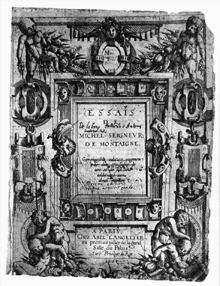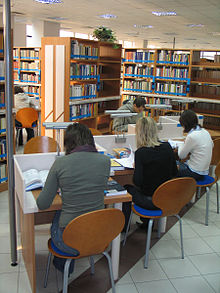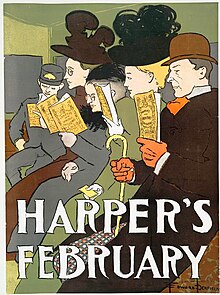
Non-fiction is any document or media content that attempts, in good faith, to convey information only about the real world, rather than being grounded in imagination. Non-fiction typically aims to present topics objectively based on historical, scientific, and empirical information. However, some non-fiction ranges into more subjective territory, including sincerely held opinions on real-world topics.
Genre is any form or type of communication in any mode with socially-agreed-upon conventions developed over time. In popular usage, it normally describes a category of literature, music, or other forms of art or entertainment, whether written or spoken, audio or visual, based on some set of stylistic criteria. Genres can be aesthetic, rhetorical, communicative, or functional. Genres form by conventions that change over time as cultures invent new genres and discontinue the use of old ones. Often, works fit into multiple genres by way of borrowing and recombining these conventions. Stand-alone texts, works, or pieces of communication may have individual styles, but genres are amalgams of these texts based on agreed-upon or socially inferred conventions. Some genres may have rigid, strictly adhered-to guidelines, while others may show great flexibility.
Narrative exposition, now often simply exposition, is the insertion of background information within a story or narrative. This information can be about the setting, characters' backstories, prior plot events, historical context, etc. In literature, exposition appears in the form of expository writing embedded within the narrative.

Wayne Clayson Booth was an American literary critic and rhetorician. He was the George M. Pullman Distinguished Service Professor Emeritus in English Language & Literature and the College at the University of Chicago. His work followed largely from the Chicago school of literary criticism.
"The Death of the Author" is a 1967 essay by the French literary critic and theorist Roland Barthes (1915–1980). Barthes's essay argues against traditional literary criticism's practice of relying on the intentions and biography of an author to definitively explain the "ultimate meaning" of a text. Instead, the essay emphasizes the primacy of each individual reader's interpretation of the work over any "definitive" meaning intended by the author, a process in which subtle or unnoticed characteristics may be drawn out for new insight. The essay's first English-language publication was in the American journal Aspen, no. 5–6 in 1967; the French debut was in the magazine Manteia, no. 5 (1968). The essay later appeared in an anthology of Barthes's essays, Image-Music-Text (1977), a book that also included his "From Work to Text".

Academic writing or scholarly writing is nonfiction writing produced as part of academic work in accordance with the standards and disciplines of each academic subject, including:

Inventio, one of the five canons of rhetoric, is the method used for the discovery of arguments in Western rhetoric and comes from the Latin word, meaning "invention" or "discovery". Inventio is the central, indispensable canon of rhetoric, and traditionally means a systematic search for arguments.

The Essays of Michel de Montaigne are contained in three books and 107 chapters of varying length. They were originally written in Middle French and were originally published in the Kingdom of France. Montaigne's stated design in writing, publishing and revising the Essays over the period from approximately 1570 to 1592 was to record "some traits of my character and of my humours." The Essays were first published in 1580 and cover a wide range of topics.
Text types in literature form the basic styles of writing. Factual texts merely seek to inform, whereas literary texts seek to entertain or otherwise engage the reader by using creative language and imagery. There are many aspects to literary writing, and many ways to analyse it, but four basic categories are descriptive, narrative, expository, and argumentative.

The rhetorical modes are a broad traditional classification of the major kinds of formal and academic writing by their purpose: narration, description, exposition, and argumentation. First attempted by Samuel P. Newman in A Practical System of Rhetoric in 1827, the modes of discourse have long influenced US writing instruction and particularly the design of mass-market writing assessments, despite critiques of the explanatory power of these classifications for non-school writing.
The five-paragraph essay is a format of essay having five paragraphs: one introductory paragraph, three body paragraphs with support and development, and one concluding paragraph. Because of this structure, it is also known as a hamburger essay, one three one, or a three-tier essay.
Advanced Placement (AP) English Language and Composition is a course and examination offered by the College Board as part of the Advanced Placement Program.
In literature and other artistic media, a mode is an unspecific critical term usually designating a broad but identifiable kind of literary method, mood, or manner that is not tied exclusively to a particular form or genre. Examples are the satiric mode, the ironic, the comic, the pastoral, and the didactic.
The Jane Schaffer method is a formula for essay writing that is taught in some U.S. middle schools and high schools. Developed by a San Diego teacher named Jane Schaffer, who started offering training and a 45-day curriculum in 1995, it is intended to help students who struggle with structuring essays by providing a framework. Originally developed for personal narratives and essays about literature, the curriculum now also covers expository and argument essays.
Prewriting is the first stage of the writing process, typically followed by drafting, revision, editing and publishing. Prewriting can consist of a combination of outlining, diagramming, storyboarding, and clustering.
In common usage and linguistics, concision is a communication principle of eliminating redundancy, such as using as few words as possible in a sentence while preserving its meaning. More generally, it is achieved through the omission of parts that impart information that was already given, that is obvious or that is irrelevant. Outside of linguistics, a message may be similarly "dense" in other forms of communication.
A critical précis, or sometimes rhetorical précis, is a short work written in an expository style similar to an essay. It summarises all the main ideas, arguments, and abstractions from longer text. The purpose of a critical précis is to make the original author's thesis more accessible by allowing readers to skip non-essential components of the original work. The writers of précis avoid copying directly from the original text—excepting cited quotations—to avoid academic plagiarism.
Gertrude Buck was one of a group of powerful female rhetoricians of her time. She strived to inspire young women to take on leadership roles within the democracy using the written word. She wrote many books, plays, articles, and poems relating to her cause. Buck dedicated her life to "challenging the patriarchal paradigm with her reformist views of pedagogy and rhetoric".

Karen L. Hellekson is an American author and scholar who researches science fiction and fan studies. In the field of science fiction, she is known for her research on the alternate history genre, the topic of her 2001 book, The Alternate History: Refiguring Historical Time, and has also published on the author Cordwainer Smith. In fan studies, she is known for her work on fan fiction and the culture of the fan community. She has co-edited two essay collections on fan fiction with Kristina Busse, and in 2008, co-founded the academic journal, Transformative Works and Cultures, also with Busse.










